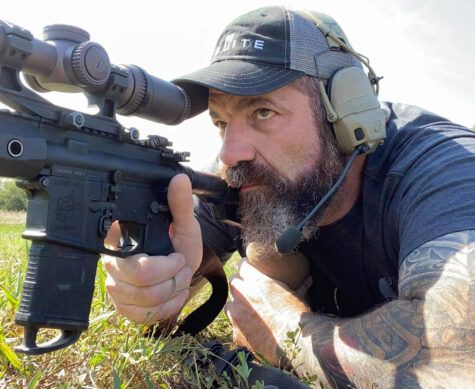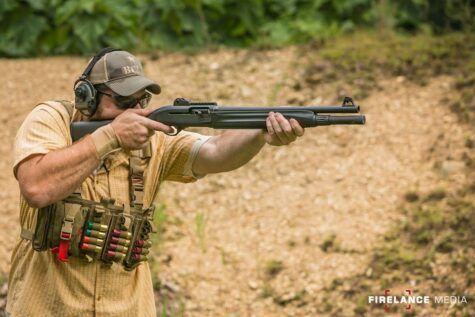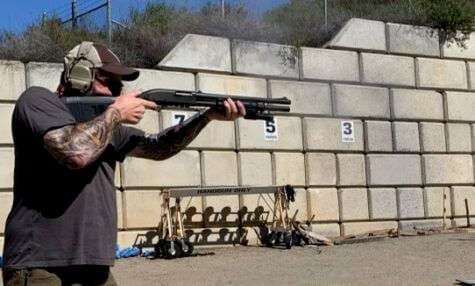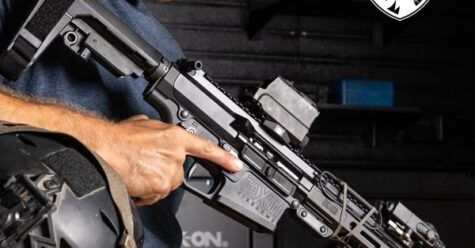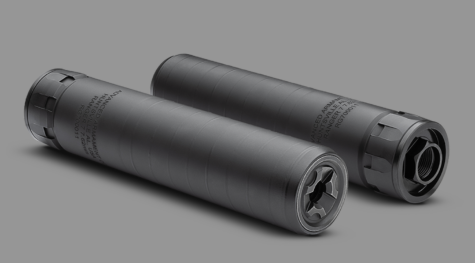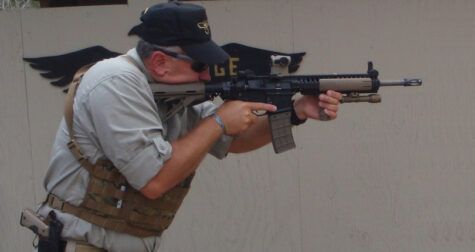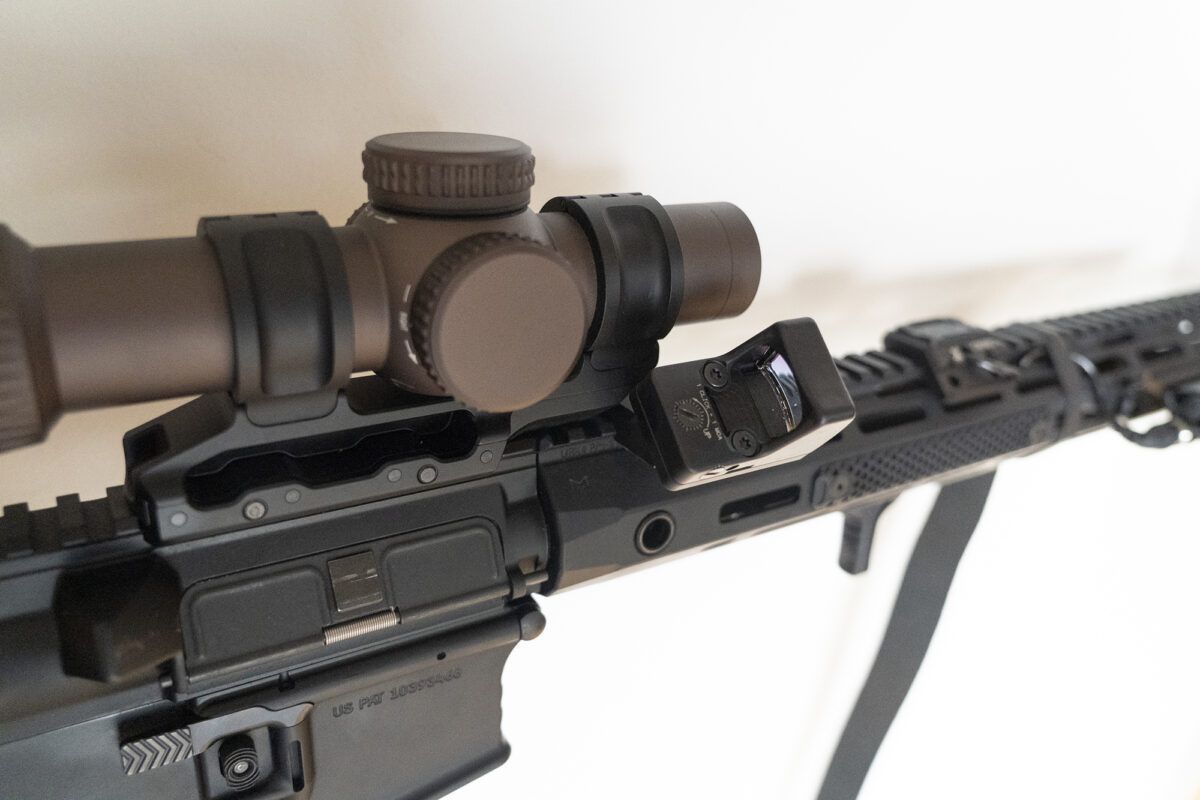
Offset red dots mounted at 45 degrees are increasingly common on AR-15s. Are these optics necessary? Is running an optic at 12-o-clock on top of your primary optic beneficial? What are the advantages of an offset red dot and just who should consider using them? If you do decide to run one, what offset red dot should you consider? For answers to these questions and more, we sat down with Steve “Yeti” Fisher of Sentinel Concepts.
Q: Steve, it’s been a bit since we’ve talked. Before we talk about offset red dots, can you catch us up on what is the Carbine Diagnostics course that you’re offering this year?
Steve “Yeti” Fisher, Sentinel Concepts – We’ve got a pretty aggressive schedule going on this year, and one of those courses is Carbine Diagnostics. It’s a one-day course with a 200-250 round count, depending on the students’ skill level and the number of students.
In working with departments and individuals, I find that there are often things that need to be addressed regarding how to tweak and improve their performance levels. We have seen an influx of new shooters, and it’s essential that they get a fundamental understanding of the whys and the hows of zeroing, gear selection, shooting performance abilities, and an overall fundamental package of how to shoot their gun and how to shoot it better.
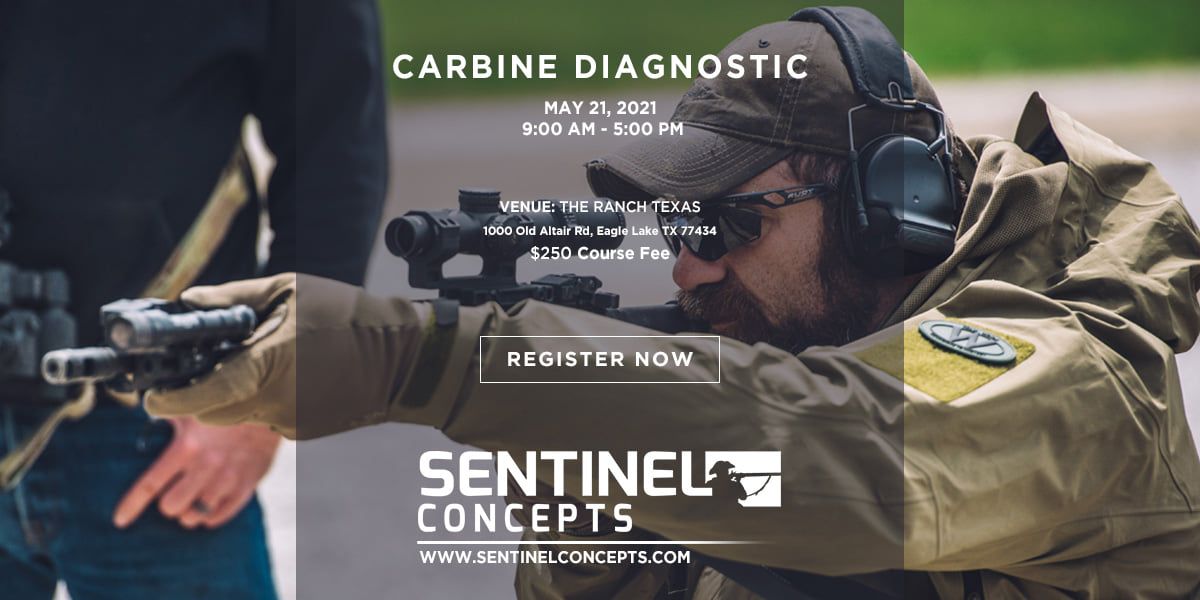
I saw a need to help shooters gain knowledge while not fighting their equipment. A lot of it was things I have seen in past classes…things like not understanding how to use a sling correctly or how to set up their guns’ attachments and optics in a way that would enhance their performance. My goal is to give students a deeper understanding of the basics and why’s that can translate into other courses that may take months and years down the line. It might be things that they have heard of but have yet to experience. Carbine Diagnostics is going to be very useful for attendees that way.
Q: Let’s dive into the reason we’re chatting today…Offset red dots on the AR. More and more, we’re seeing shooters have red dot sights attached to their rifles, in addition to their magnified optic. What’s your take on this?
Steve “Yeti” Fisher, Sentinel Concepts – I think a lot of it comes from the 2-Gun and 3-Gun communities. You would have a low-powered or medium power optic set up to give you more precision for distant targets. That might mean reduced size targets at 50 yards or targets at 300 yards. You’d then use a 45-degree offset red dot by rotating the gun to rapidly engage targets that were up close at 10, 15, or 25 yards.
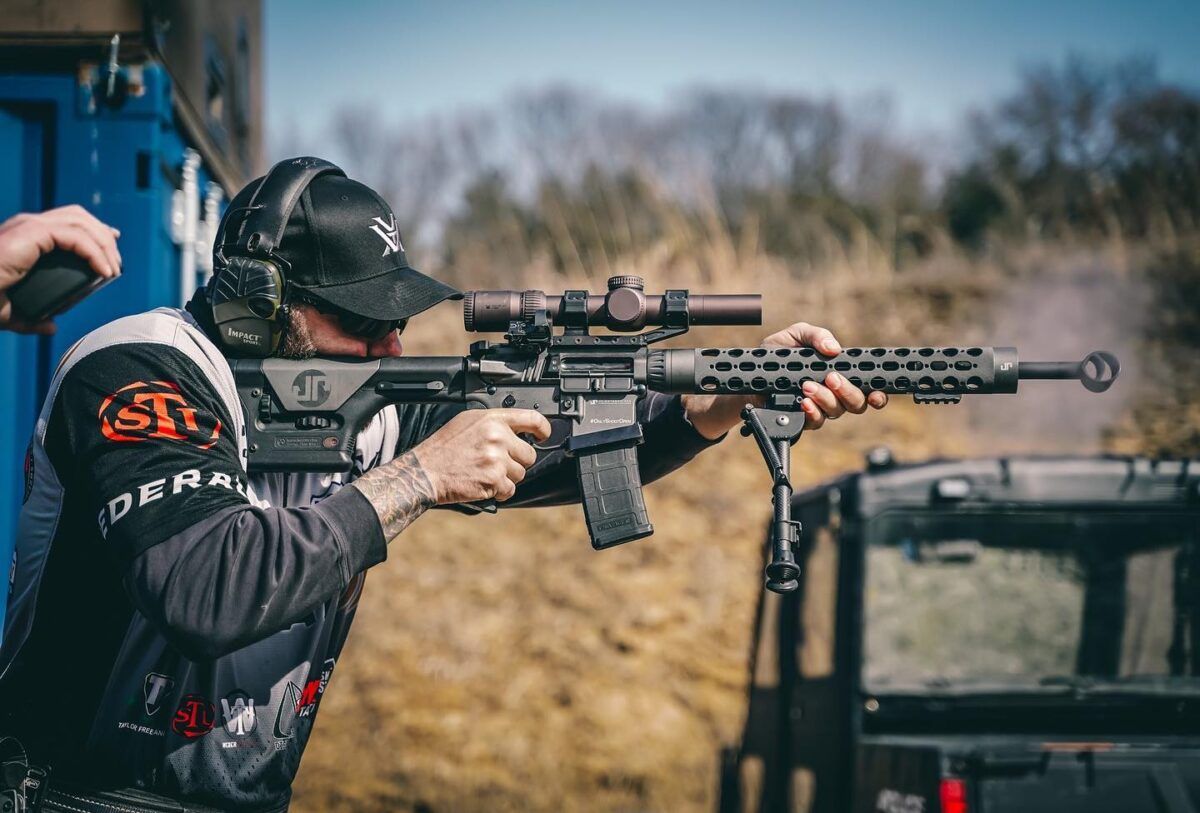
Q: I feel like we see it more outside of the realm of competition. How viable is this for a self-defense/home defense situation? Is this a case of it adding value, or is it something that looks cool?
Steve “Yeti” Fisher, Sentinel Concepts – There is a “need vs. want” aspect that people should consider before investing in a secondary red dot optic. The thing that most people are missing is the whys behind it. There are several reasons why you might consider one. It could be for competition. It could be that you like to leave your LPVO set to 6x.
That said, if you have your LPVO set to 1x, and it is set up correctly, it’s a red dot at that point. I find I can run these optics set at 1x with no loss of speed when compared to a dedicated red dot. In that case, I don’t see a secondary red dot as a benefit for the average homeowner’s house gun. There’s ultimately no need for it. Again, this is a personal thing.
Now some will counter with the question of “what if my primary optic goes down because a round impacts it?” To that, I would simply say, “Stop.” (laughs).
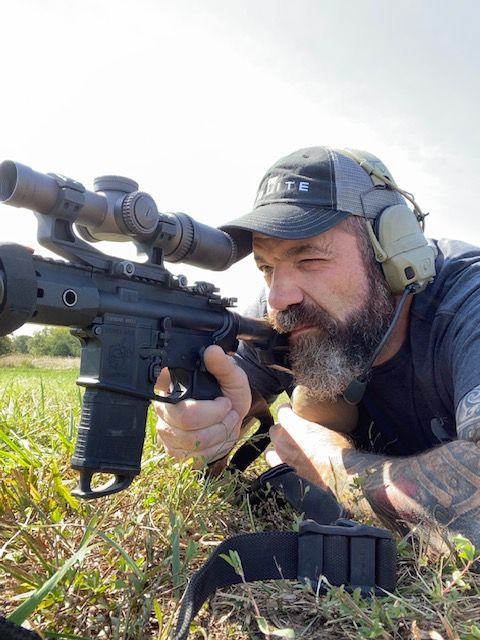
As far as your primary optic breaking, It’s not something I’d be too anxious about. If you look at the 3-Gun community, they’ve been throwing guns in barrels for years. LPVOs have a very long history of being beaten up. If you buy a good quality optic and a good quality mount, I can tell you that in the past 20 years, I have been using these optics, that a malfunction is very, very rare.
Today, we just are seeing such a crossover of people who come from the game community or who are doing “performance” shooting. For them, offset red dots are excellent. Just make sure you are truthfully navigating why you are putting equipment on your gun and why you feel the need to back up your primary optic.
For a house gun, there is absolutely no need. For a patrol gun, I don’t see a massive need for it in a law enforcement setting. Some people would consider the 45-degree offset red dot a snag hazard. I’ve personally seen them get wedged on door frames, barricades, and the user ends up losing that secondary optic because it’s been jammed into a door frame or car door frame… I’ve seen weird failures happen with them when set at the 45-degree angle…and it’s usually with guys who are not used to maneuvering the gun once they have added more stuff to it.
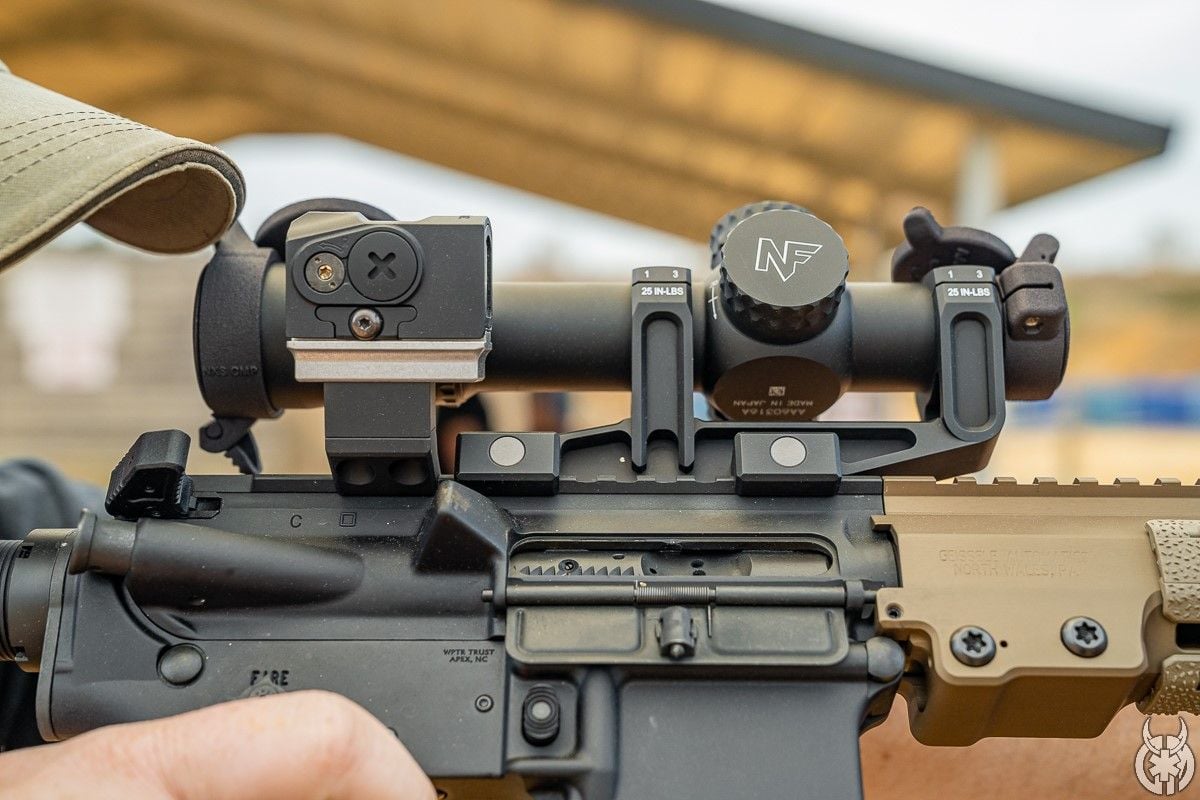
Q: So, who does benefit from an offset red dot then?
Steve “Yeti” Fisher, Sentinel Concepts – Ultimately, I think it’s those who are in the competitive world. Or, perhaps people who are running night vision goggles. People who are DMR/SPR shooters who have a higher magnification optic on the gun like a 2.5-10x or a 3.5-15x can significantly benefit if they find that gun pushed into another role. I know personally, my DMR-type rifles, like my Knight’s Armament LPR, an 18″ DMR gun set up with a 3-18x Vortex Razor, I have a red dot mounted to it because I often use it for coyote hunting and other critter-getting, besides just steel and paper. For me, it also gives me the benefit of close-up shooting with night vision goggles.
Or, if I’m walking through the woods and I have a snapshot, I want to take on whatever particular critter I am hunting with that gun…coyotes, hogs, varmint control.
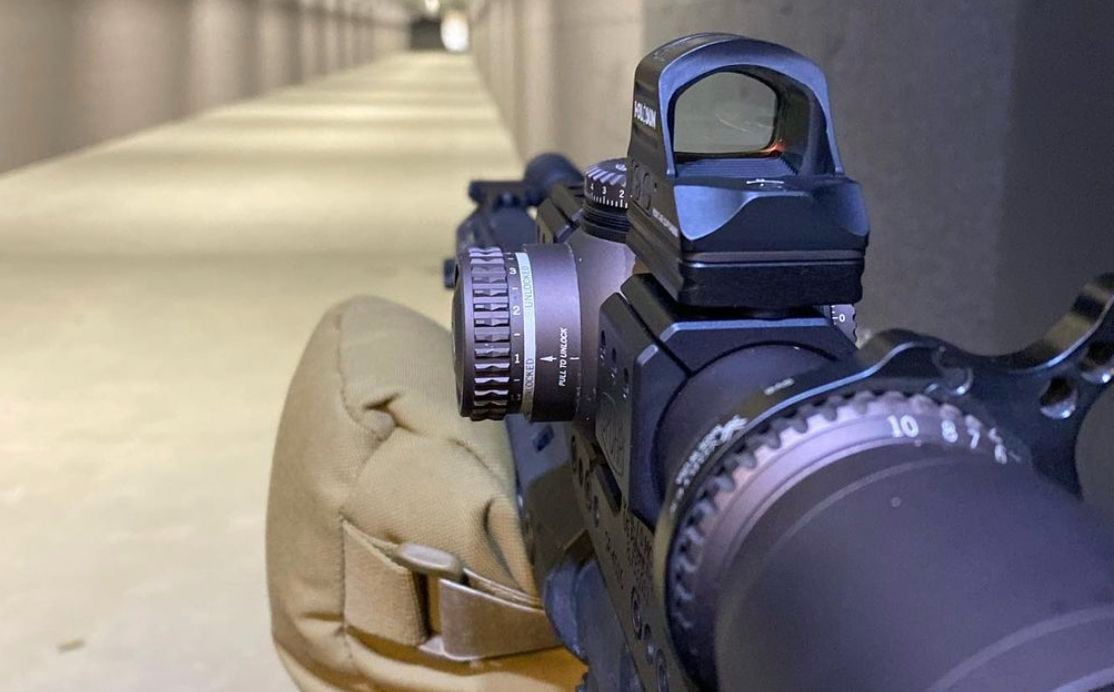
Q: Let’s say you determine that you want a secondary red dot. Do you risk overcomplicating the gun by running a secondary optic? Is there an argument that you should focus on your skill with your primary optic before adding more to the gun…or is that overthinking things?
Steve “Yeti” Fisher, Sentinel Concepts – I think that’s overthinking it. It’s not hard at all. Running a secondary red dot is trainable with reps. You want to work on maximizing transitions on targets at close range from near to far. Set up a timer, set up targets at 7, 10, or 15 yards, and then setup targets out to 50, 75, or 100. Then, just perform transition drills where you bring the gun up on the close target, roll the gun in-board, get on the 45-degree offset optic, deliver your shots, then snap the gun back into a normal firing position, pick up the primary optic, and engage your longer distance targets.
This is also a practice that you can do during your dry-fire time. With basic weapon manipulation or mounting of the gun, no ammo is required. Just build up your reps. Work on having an efficient mounting position and head position on the gun, tracking targets up close, and then practice rolling the gun back into place for distant targets. It probably doesn’t take more than 50 good reps to start to get it really solid.
Q: So, let’s say we want to add the secondary red dot…there are many options for doing so. Some are at 45-degrees. Others attach on scope rings at the 12-o-clock position. Did one come first? Is one now obsolete? Has one proven to be better than another?
Steve “Yeti” Fisher, Sentinel Concepts – I like this part (laughs)…so timeline-wise…first off, your readers should know that this is nothing new. Offset 45 or 12-o-clock mounted secondary optics have been used for years and years. We can trace it back to other platforms. We’ve even seen it with surveying equipment. The idea is not new.
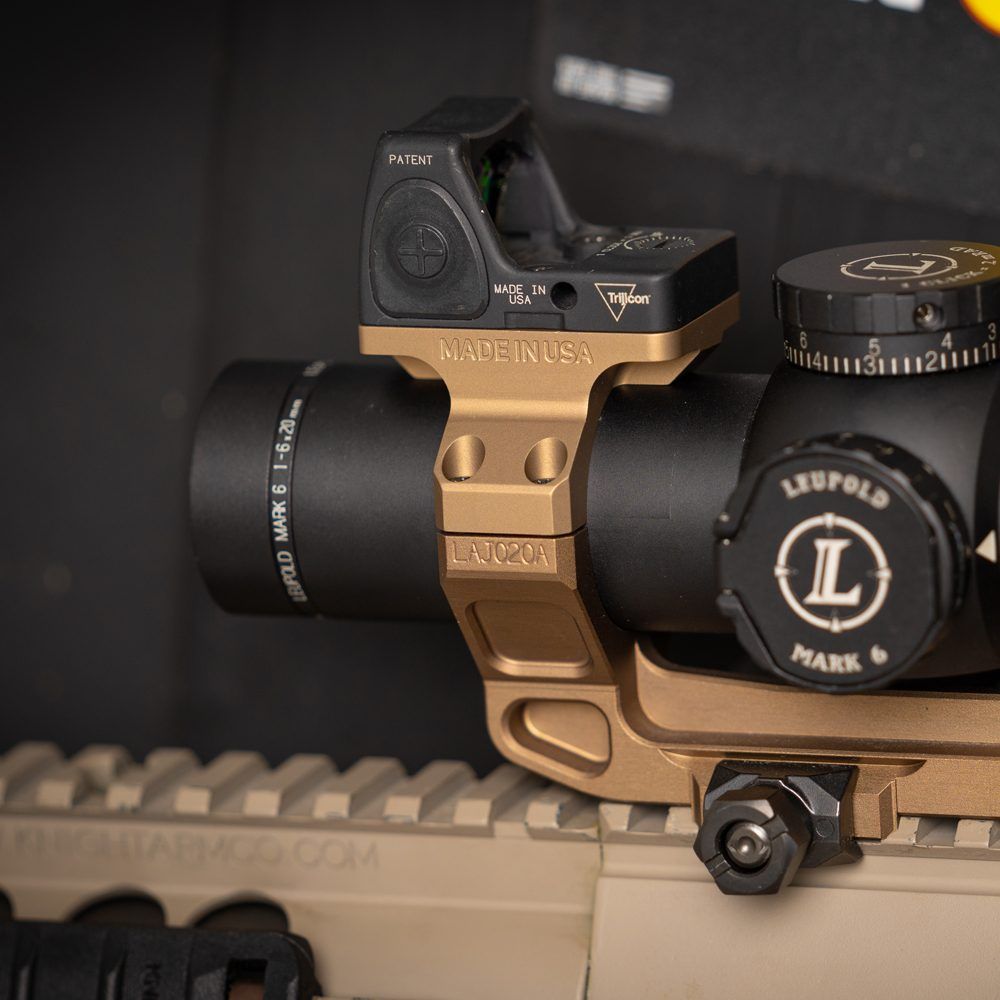
Today, we have a lot of good-quality options out there. You have your Geissele/Reptilia setup. You have Valhalla Tactical, Badger Ordnance, Spuhr, LaRue, Knight’s Armament, Unity Tactical. They all seem to have a variation at either 45 or 12-o-clock that will either mount to their existing mounts, somebody else’s mount, or a stand-alone ring mount that will interface with your setup.
These can all trace back to other places or other requirements. Think back to when Trijicon had the RMR mounted on top of the ACOG or a red dot on top of the Elcan. Nothing is new in this industry. Everything circles right back around again. Today, we’re fortunate to have so many to choose from, and I feel like I have used them all. I’ve certainly used all of the ones I mentioned.
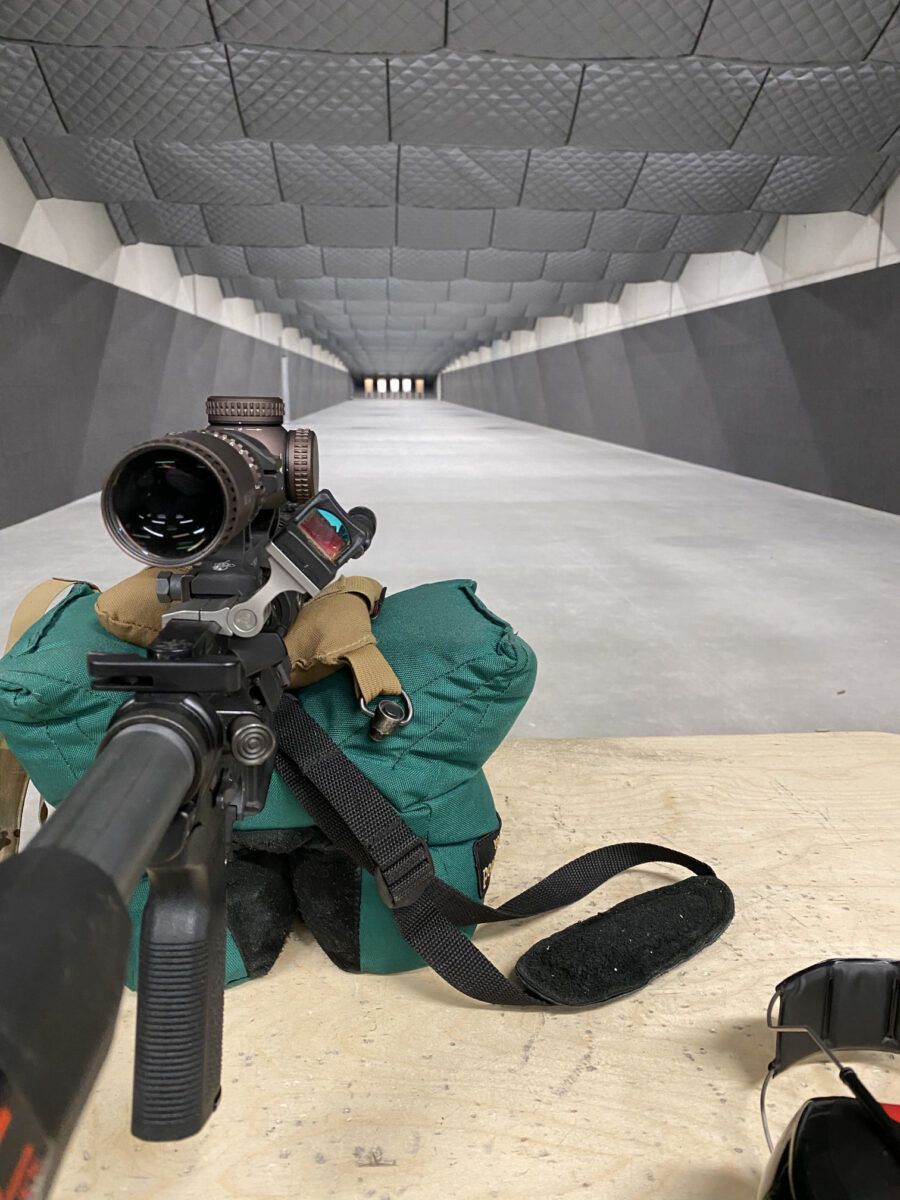
In doing that, I find that I prefer a 12-o-clock mount. For passive aiming with goggles, I use a 12-o-clock red dot mount paired with my Vortex Razor 1-10 Gen III in a 1.5″ height mount.
With that, I can bury my head down on the gun for precision at a distance, but then, I can simply lift my head and shoot off my red dot that has been zeroed at 50 yards. I do not have to change shoulder position; I’m not rolling or canting the gun. I’m simply lifting my head off of the primary optic to the secondary.
Q: What would you say to those who claim the 45-degree offset is “better” because you keep the cheek weld on the gun?
Steve “Yeti” Fisher, Sentinel Concepts – If you look back through history, we had red dots mounted on carrying handles of A1 and A2 assemblies for years. Dudes did a lot of good work with those setups. You can trace that back a long way, all the way to the Son Tay Raiders using Armson OEGs (Occluded Eye Gunsight) mounted on the carry handles of their M-16s
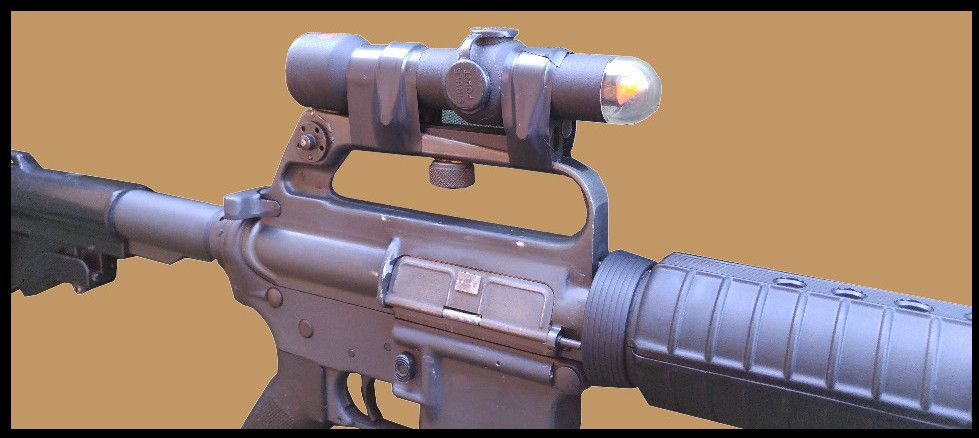
So, again, it’s nothing new, but you have to remember the purpose of the red dot. What’s it for? It’s for up-close shooting and perhaps passive shooting under night vision inside of 50 yards. Chin cheek weld is almost irrelevant at that point. I’d note it’s also helpful for those wearing gas masks.
Another reason I like the 12-o-clock is that it seems to be not as much of a snag hazard as I see the 45-degree offset red dot being. It also prevents me from slip, trip, and falling on my optic, which I have seen happen with the 45. (laughs). That said, these are minor things. These are things that can happen no matter what. Things get banged, bashed…anything can be damaged. I just prefer to have the 12-o-clock set up.
Some people would prefer to have their secondary optic mounted on the gun instead of their primary optic in case there is something wrong with the primary; they can remove it and still have an optic mounted and ready-to-go on their gun. There are all kinds of factors that come in based on the job and the individuals involved.
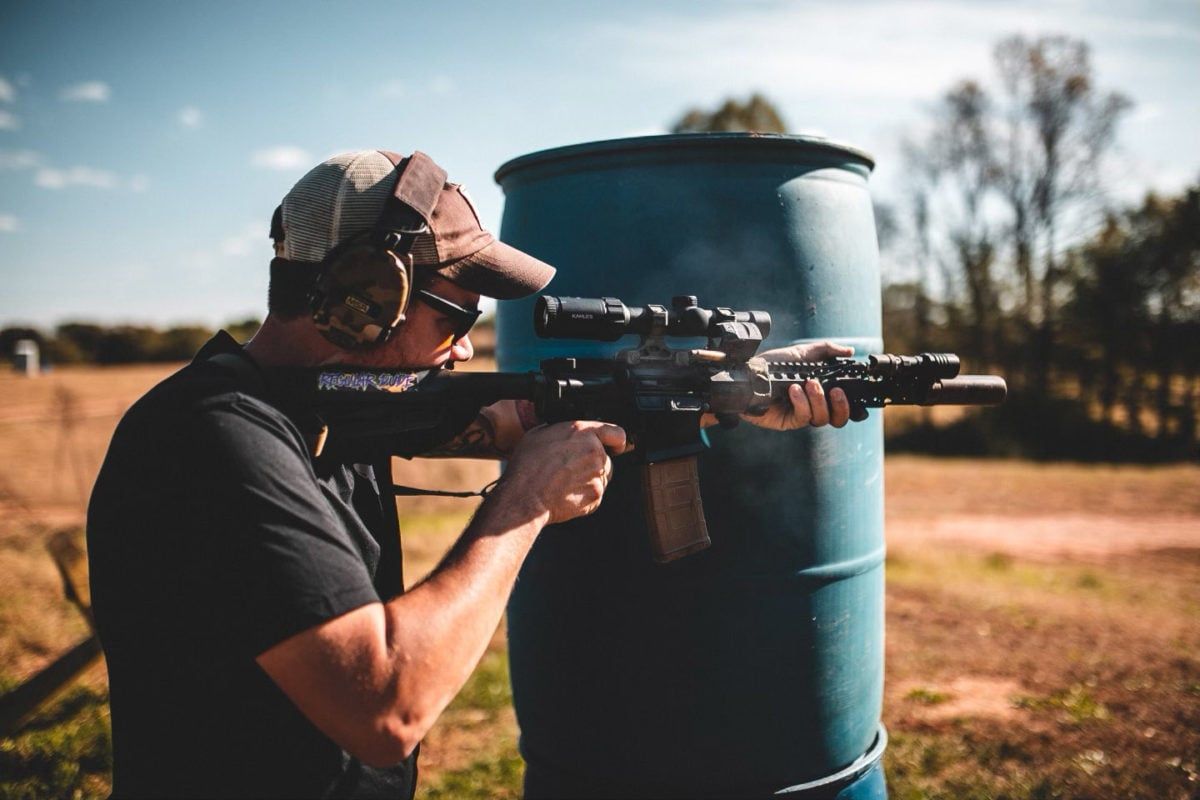
Q: Sometimes I see people mount their offset red dots behind the ejection port, close to the rear of the gun…more commonly, I see it pushed forward. What do you prefer?
Steve “Yeti” Fisher, Sentinel Concepts – – I’ve done both. One thing to remember is that if you are shooting suppressed, there is a lot of blowback coming from the ejection port. That can end up obscuring your lens. That said, some people do prefer it closer to their face because they can pick up the red dot sooner. It’s something to play with and see what works best for you.
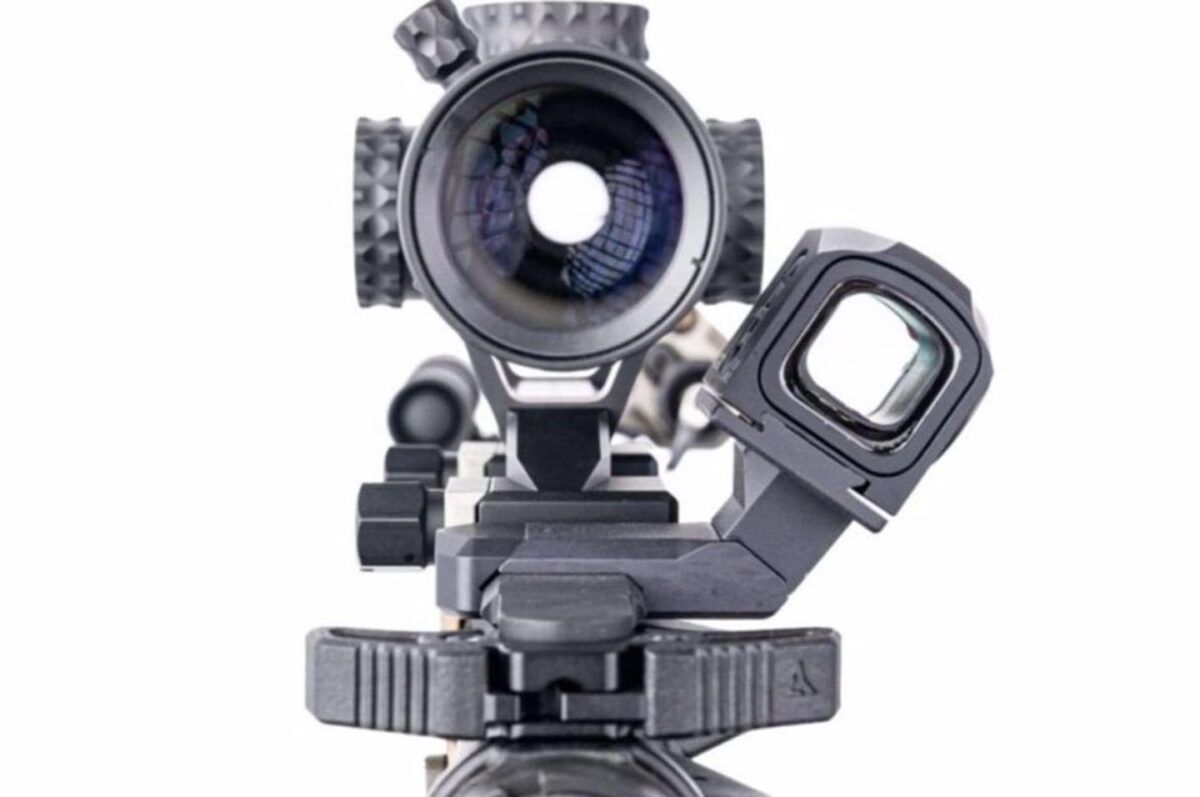
Q: Finally, can we touch on what optics to consider for offset red dots?
On some of my hunting guns, depending on the environments they might see, I am running closed emitter red dots, like the Aimpoint Acro and the Holosun 509T. I’ve even used an Aimpoint T1 and T2. I do prefer things to be small and lightweight.
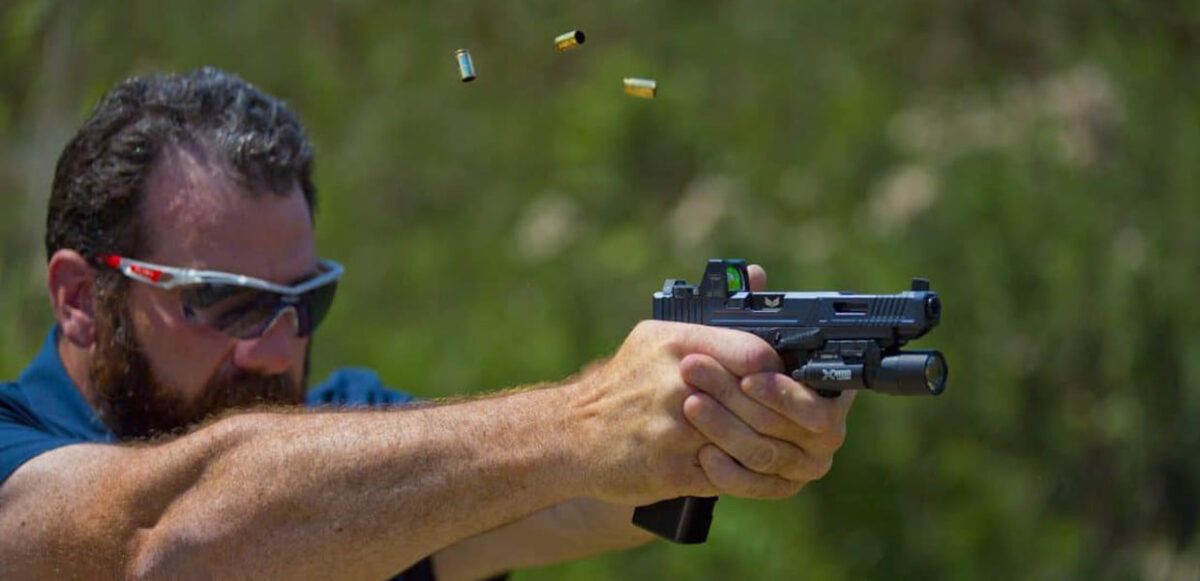
Other red dots are completely capable. Trijicon RMRs, Delta Point Pros…and these hold up well in the role of offset red dots. You’re also not putting them under the same sort of stress as they would face if slide-mounted on a pistol. There are also great options available right now from Holosun, in addition to what’s available from Trijicon and Aimpoint.
Today, I am mainly a Holosun user, primarily because of their cost and the number of guns that I have them on. For shooting on the move and for shooting movers, I prefer the Holosun’s hollow circle reticle option.
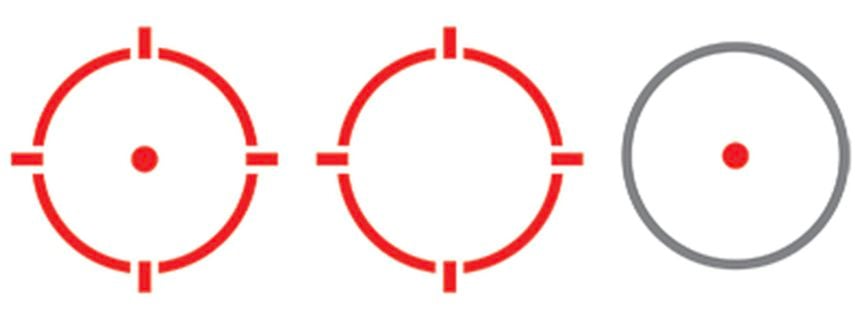
The circle is 65-MOA at 100 yards…but inside of 25 yards, that’s 8-inches. That gives me a lot of room to track movers, especially animal and human-size moving targets. I can track things much like you would with an Eotech.
###
2 - 2Shares
